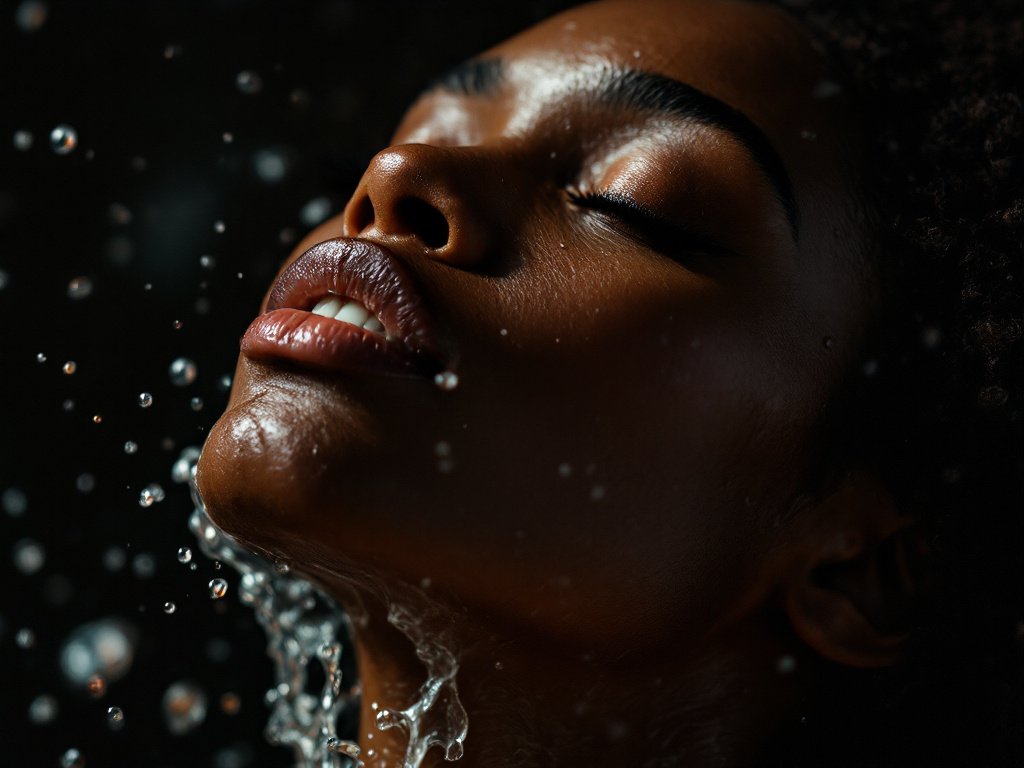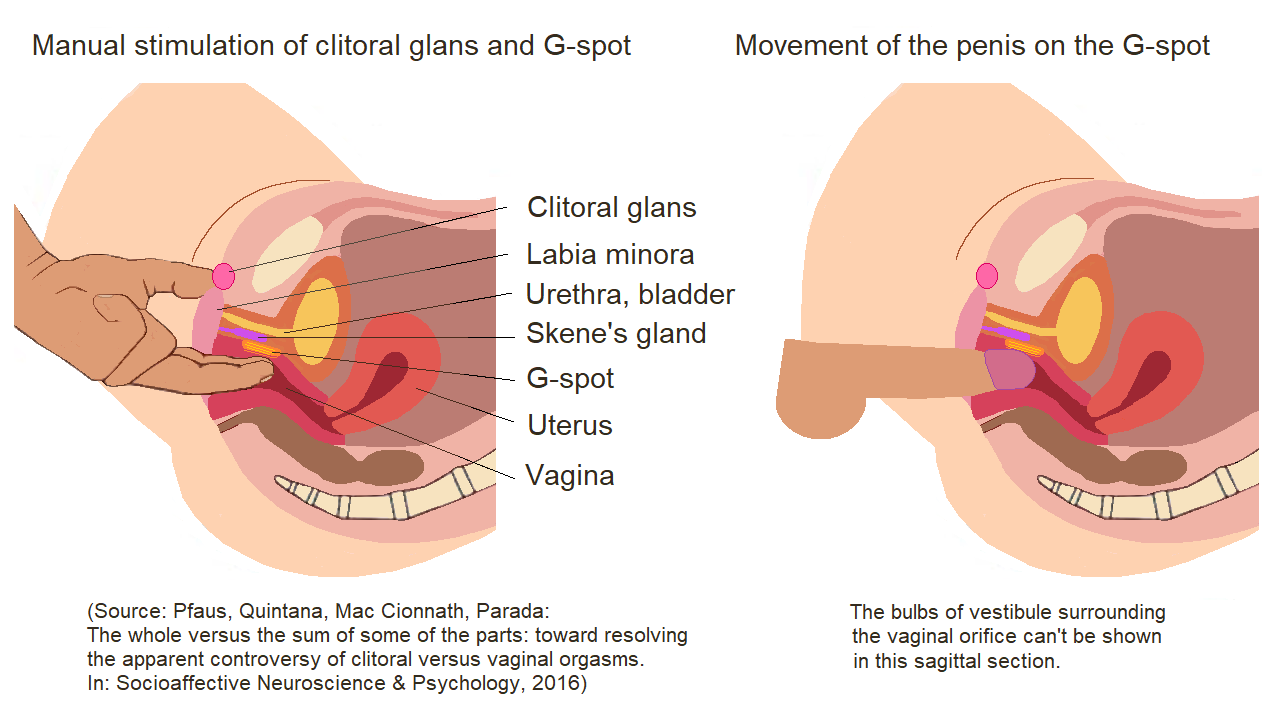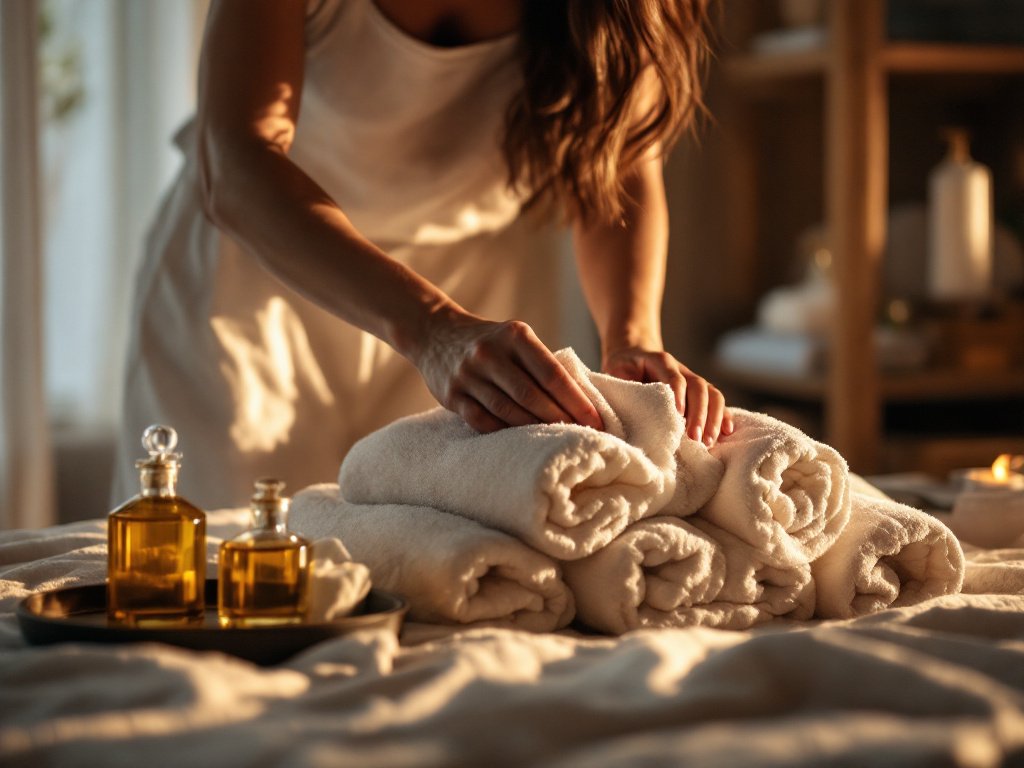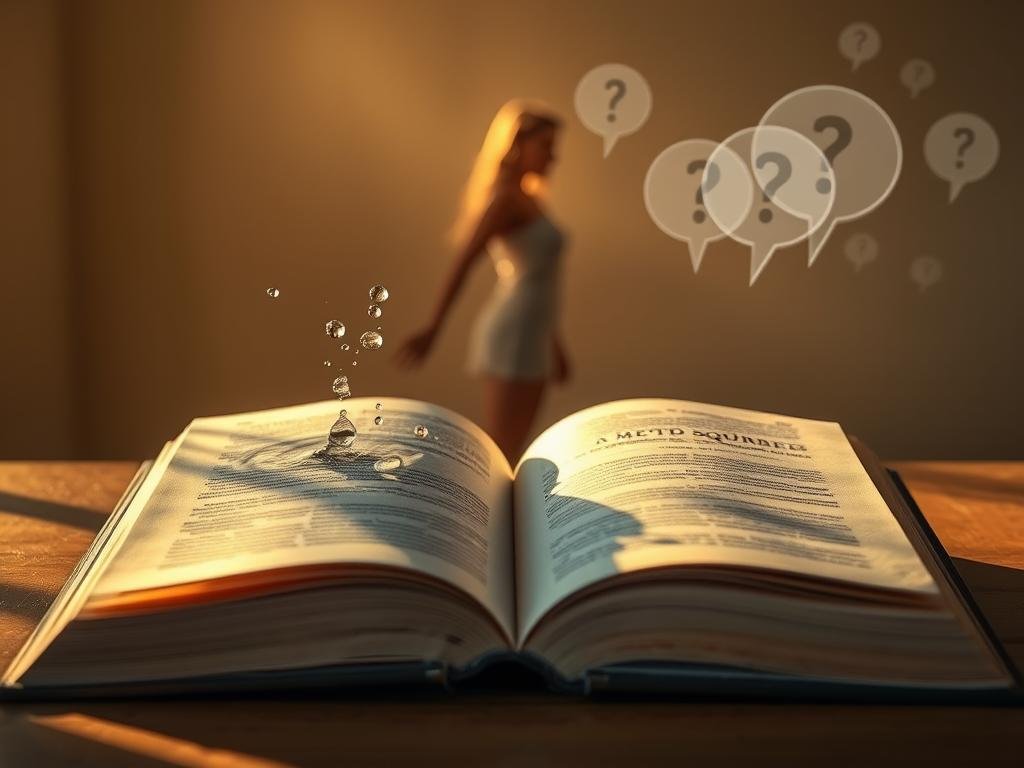
Unlocking the Secrets: A Beginner’s Guide to Squirting
Introduction to Squirting
Squirting, a topic that’s often shrouded in mystery and controversy, has gained significant attention in recent years. As more individuals seek to understand their bodies and sexual responses, the practice of squirting has become a point of intrigue for many. This guide aims to demystify squirting by laying out what it truly is, addressing common misconceptions, and examining its rising popularity in mainstream culture.
What is Squirting?
Squirting, or female ejaculation, refers to the expulsion of fluid from the urethra at the peak of sexual arousal or orgasm. This phenomenon can occur independently of or alongside traditional orgasms. While the exact composition of the expelled fluid varies, it is thought to contain a mix of fluids from the Skene’s glands—sometimes referred to as the female prostate—and a small amount of urine. It’s worth noting that the experience of squirting can differ greatly from person to person; some may experience intense sensations along with the release, while others might feel nothing more than a physical release.
Common Misconceptions
Despite being a natural bodily response, squirting is often surrounded by myths. One prevalent misconception is that squirting relies solely on G-spot stimulation. In reality, squirting can happen through various types of sexual stimulation, including clitoral and vaginal stimulation. Additionally, some believe that squirting confirms satisfaction or orgasm, but that’s not necessarily the case; many can squirt without experiencing a full orgasm. Another myth suggests that squirting is merely urination, leading to feelings of inadequacy or embarrassment. While urine might be involved, many women report that the experience is distinct from typical urination.
The Rising Popularity of Squirting
Squirting has surged in mainstream media, notably through pornographic content, which often emphasizes this act as a highlight of female pleasure. According to data from adult entertainment sites, searches for squirting have consistently ranked among the most popular categories. This increased visibility has sparked conversations about sexual empowerment, body positivity, and the normalcy of diverse sexual experiences. As more individuals explore their sexuality, the understanding and acceptance of squirting as a legitimate sexual response continue to grow, fostering a culture that encourages open dialogue and exploration of one’s sensual potential.
The Science Behind Squirting

Squirting is a fascinating phenomenon that has sparked both curiosity and debate. To understand it better, we need to delve into female anatomy, the specific role of the G-spot, and the distinctions between squirting and female ejaculation. Let’s explore these aspects in detail.
Understanding Female Anatomy
The female reproductive system is a complex and intricate network of structures, each playing a vital role in sexual pleasure and reproductive health. At the forefront of this discussion is the clitoris, which extends beyond the external structure, housing a network of nerves and erectile tissue that contribute to sexual arousal and orgasm.
In addition to the clitoris, the vaginal canal and the Skene’s glands—or what is often referred to as the female prostate—are significant in the squirting process. The Skene’s glands are located near the urethra and are thought to produce a fluid that can be expelled during intense arousal or orgasm. Understanding this anatomy is crucial for anyone interested in exploring squirting, as it highlights the fluid dynamics of the female body during sexual stimulation.
The Role of the G-Spot
The G-spot, short for Grafenberg spot, is an area located on the anterior vaginal wall, approximately 1 to 3 inches inside the vagina. Stimulating this spot can lead to heightened pleasure and, for some women, a squirting orgasm. The G-spot is believed to be connected to the urethra and the Skene’s glands, which further supports its role in female ejaculation.
When stimulated, the G-spot can swell and become more sensitive, increasing pleasure immensely. Different women experience G-spot stimulation in various ways; some may find it intensely pleasurable while others may feel discomfort. It’s essential to communicate with your partner and explore what feels best for you without the pressure of achieving a specific outcome, such as squirting.
Differences Between Squirting and Female Ejaculation
While often used interchangeably, squirting and female ejaculation are not the same. Squirting refers to the expulsion of fluid from the urethra during sexual arousal or orgasm, and this fluid can contain both urine and other secretions. In contrast, female ejaculation specifically refers to the release of fluid produced by the Skene’s glands, which may appear differently in terms of consistency and volume.
Research indicates that the fluid expelled during squirting often has similar properties to urine, but it is not entirely urine in every case. The fluid’s composition may vary based on individual anatomy and the circumstances under which squirting occurs. Recognizing these distinctions can enhance understanding and acceptance of the experiences surrounding squirting, helping to demystify this natural aspect of female sexuality.
Preparing for the Squirting Experience

Before diving into the world of squirting, setting the stage is crucial for a fulfilling experience. Let’s explore the foundational steps to prepare you physically and emotionally.
Creating a Comfortable Environment
Comfort is key when it comes to exploring squirting. Start by selecting a private space where you won’t be interrupted. Ensure the area is warm and inviting, perhaps lighting some candles or using soft lighting to create a soothing ambiance. Lay down some towels or a waterproof covering to protect your sheets—this can ease worries about messiness.
In addition to temperature and cleanliness, consider the sounds around you. Play soft music or ambient sounds to drown out any distractions. The idea is to create a sanctuary where you feel safe to explore your body and desires, free from judgment or pressure.
Communication with Your Partner
Open communication with your partner is essential for a successful squirting experience. Discuss your desires, boundaries, and any fears you might have before starting. This dialogue can help both partners feel more at ease, fostering an atmosphere of trust.
Make sure you both understand what squirting entails, including that it’s not a guaranteed outcome. By discussing techniques or specific areas of stimulation you enjoy, you can work together to enhance the experience. Remember, it’s about pleasure and connection rather than a performance. Encourage your partner to share feedback and to ask about what feels best for you, ensuring both of you are on the same page.
Psychological Relaxation Techniques
Mental relaxation plays a significant role in achieving squirting. Start by incorporating deep breathing exercises. Inhale deeply through your nose, hold for a moment, and exhale slowly through your mouth. This technique can help calm your nervous system and set the mood for exploration.
Another effective technique is visualization. Picture a relaxing scenario, whether it’s a serene beach or a cozy cabin in the woods, allowing your mind to escape daily stresses. You can also practice mindfulness—focus on the sensations in your body, noticing your breath, heart rate, and any erotic feelings without judgment.
Lastly, consider incorporating gentle yoga or stretching exercises before your intimate session. These practices can enhance body awareness and help you feel more in tune with your physical state, ultimately leading to a more satisfying experience.
Techniques for Achieving Squirting

Exploring the world of squirting can be exciting and liberating, but understanding the techniques that can help you achieve this experience is essential. Below, we delve into three critical areas that can enhance your chances of unlocking this unique response: stimulation methods, the best positions for squirting, and the importance of lubrication.
Stimulation Methods
When it comes to achieving squirting, stimulation methods play a pivotal role. Many women find that direct stimulation of the G-spot, located about one to three inches inside the vaginal wall on the belly-button side, is crucial. Using fingers, you can curve them in a “come hither” motion to apply pressure to this sensitive area. Alternatively, some individuals benefit from a combination of G-spot and clitoral stimulation, as this can enhance arousal and lead to a squirting orgasm. Using sex toys designed for G-spot stimulation can also be effective — look for those with a curved shape that targets the area. Each body is different, so experimenting with various methods allows you to discover what feels best for you.
Best Positions for Squirting
The positions you choose during intimate moments can significantly influence your ability to squirt. Doggy style is a popular choice, as it allows for deep penetration and direct G-spot stimulation, while also providing ample space for fluid release. Missionary position, with the person with a vulva’s hips elevated on a pillow, can also build pressure against the G-spot and is effective when paired with clitoral stimulation. Another beneficial position is the woman-on-top approach, which empowers the person with a vulva to control the angle and depth of penetration, making it easier to find the right spot for squirting. Whatever position you choose, ensure it feels comfortable and pleasurable for both partners.
The Importance of Lubrication
Lubrication is an crucial aspect that should not be overlooked in the pursuit of squirting. Many find that adequate moisture enhances overall pleasure, allowing for smoother movements and reducing friction during stimulation. Water-based or silicone-based lubricants are great choices, as they can heighten sensitivity and prevent discomfort. If you’re engaging in G-spot stimulation, consider reapplying lube as needed to maintain that comfortable glide. Additionally, being well-hydrated can contribute to a better squirting experience. By ensuring sufficient lubrication, you create an environment that encourages relaxation and enjoyment, making the journey to squirting much more pleasurable.
Addressing Concerns and Myths

Understanding squirting and its nuances often leads to a whirlwind of information, misconceptions, and even some uncomfortable feelings. This section aims to clarify some common concerns surrounding squirting, diving into the pee debate, debunking prevalent myths, and exploring the emotional impact of this widely discussed phenomenon.
The Pee Debate: Myth or Reality?
One of the most contentious discussions around squirting revolves around whether the fluid expelled is urine or something entirely different. Many studies have shown that the fluid released during squirting contains similar properties to urine, which raises eyebrows and stirs up controversy. However, it’s essential to note that most squirters and sex researchers agree that squirting involves a combination of urinal and secretions from the Skene’s glands, often referred to as the female prostate.
This dual source of fluid may explain why some people mistakenly assume that squirting is simply peeing. However, it’s crucial to appreciate the distinction: the experience of squirting is generally perceived as different from urination, often associated with intense pleasure rather than the need to relieve oneself. Understanding this can help reduce feelings of shame and encourage more open discussions about the topic, ultimately demystifying the act for both partners involved.
Debunking Squirting Myths
Squirting is surrounded by numerous myths that can lead to confusion and anxiety. One prevalent misconception is that squirting equates to orgasm. In truth, many individuals can squirt without experiencing a climax, highlighting that the two are not inherently linked. Another myth suggests that only a particular technique or stimulation method can trigger squirting, but in reality, each person’s body responds uniquely to various forms of physical stimulation.
For example, while G-spot stimulation is frequently touted as the only way to achieve squirting, many find that clitoral stimulation, or a combination of both, can also lead to this experience. Additionally, the idea that squirting needs to be achieved for a sexual experience to be considered fulfilling is false. Not everyone squirts, and that’s perfectly normal. Encouraging a mindset free from these myths allows people to explore their bodies and desires without pressure or unrealistic expectations.
The Emotional Impact of Squirting
The emotional implications of squirting can be profound and complex. For some, it may bring about feelings of empowerment and sexual liberation, while others might experience embarrassment or pressure, particularly if they feel it is expected of them in a sexual relationship. Understanding this emotional landscape is vital.
Many individuals fear the mess associated with squirting, which can lead to apprehension during intimate moments. However, communication with partners can help alleviate this concern, creating a more relaxed atmosphere that fosters exploration rather than anxiety. Furthermore, the societal fixation on squirting can inadvertently tie a person’s self-worth to their ability (or inability) to squirt, reinforcing the need for a healthier narrative around pleasure that prioritizes personal enjoyment over performance.
Recognizing the emotional complexities surrounding squirting allows individuals to embrace their experiences without feeling defined by them, ultimately fostering greater self-acceptance and enjoyment in their sexual journeys.
Tips and Advice for Beginners

Embarking on your journey to experience squirting can be exciting, yet it often feels overwhelming. As a beginner, it’s essential to equip yourself with the right mindset and approaches to ensure a positive and enjoyable experience. Here are some valuable tips for those venturing into the art of squirting.
Staying Patient and Positive
Patience is vital when exploring the realm of squirting. Each body is unique, and what may work for one person might not resonate with another. It’s important to approach this experience without pressure or expectation. Celebrate small achievements along the way—these could be feelings of heightened pleasure, increased sensitivity, or even enhanced intimacy with your partner. Cultivating a positive mindset can make a substantial difference. Remind yourself that the goal is pleasure and connection, not necessarily achieving an end result. Allowing your body the grace of time can lead to greater comfort and understanding during exploration.
Experimentation and Exploration
Find joy in the journey of experimentation and exploration. Trying different techniques, angles, and kinds of stimulation will help you discover what feels best for your body. Different individuals respond to various forms of touch, whether that be through clitoral stimulation, G-spot exploration, or a combination of both. Feel free to experiment with positions, angles, or even toys. If you’re comfortable doing so, involve your partner in this exploration; open communication can lead to enhanced experiences for both of you. The key is to approach this with curiosity and openness, rather than rigid expectations.
Listening to Your Body
Listening to your body is crucial when trying to achieve squirting. Tuning into what feels pleasurable or uncomfortable can help guide your exploration. Pay close attention to your body’s signals, such as rising sensations or changes in breathing. If you start to feel a sensation similar to needing to urinate, that could be a sign of approaching climax. It’s essential to let go of any tension or anxiety you might have about letting go in that moment. Your comfort should always come first. If something doesn’t feel right, don’t hesitate to adjust or take a break. Trust yourself and your instincts—they are valuable allies in this journey.
Conclusion
Squirting can seem like an elusive and misunderstood territory in the world of sexual experiences. However, it’s essential to recognize that every individual’s journey is unique. Whether squirting is a regular part of your sexual repertoire or remains an enigma, embracing your individual sexual experiences will lead to more profound pleasure and connection with yourself and your partners.
Embracing Individual Sexual Experiences
Each person’s body responds differently to stimulation, and this diversity is something to celebrate. Instead of striving to fit into a benchmark or compare yourself to others, focus on understanding your own desires and boundaries. Remember, there is no right or wrong way to experience pleasure. By fostering an attitude of acceptance towards your sexual experiences, you can cultivate a more satisfying and authentic sexual life. Celebrate the moments, whether they involve squirting or simply enjoying intimacy in your own way.
The Benefits of Understanding Squirting
Knowledge is power, especially when it comes to sexual health and pleasure. Understanding the realities of squirting can demystify the experience, making it less intimidating and more accessible. It can also help dismantle the stigma surrounding female ejaculation, allowing individuals to feel empowered in their bodies. When armed with accurate information and techniques, you are better equipped to explore your sexuality without unnecessary pressure or embarrassment. This awareness not only enhances personal satisfaction but fosters more open and gratifying communication with partners.
Encouragement for Continued Exploration
As you venture deeper into your sexual journey, approach squirting with a spirit of curiosity rather than obligation. Explore different forms of stimulation, relax into the experience, and give yourself the grace to try without the burden of expectation. Remember, sex is about enjoyment and connection, rather than performance. So, whether squirting becomes a part of your sexual identity or not, prioritize what makes you feel good. The doors to pleasure are wide open—step through them and discover what awaits!